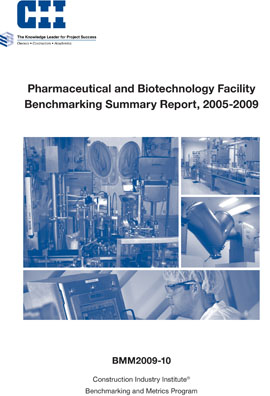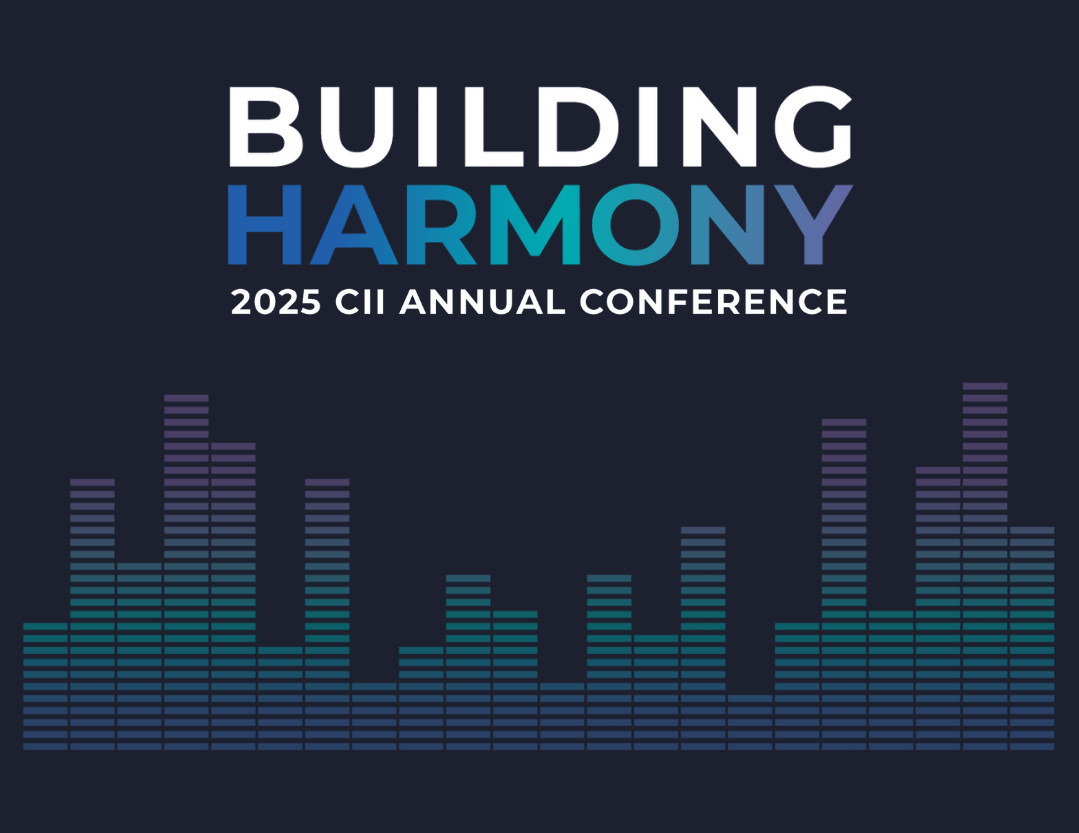
Pharmaceutical and Biotechnology Facility Benchmarking Summary Report, 2005-2009
In 2008, the revenues of the U.S. pharmaceutical and medicine manufacturing sector tallied up to $170 billion, an amount 69 percent higher than it was in 1998 (BEA, 2009). The pharmaceutical/biotechnology industry is characterized by high capital investment, technological sophistication, and competitive markets. In order to continue their success, pharmaceutical/ biotechnology companies invest heavily in their capital facilities every year. As a result, these firms are urged to adopt business strategies that add value to their facility delivery programs. Benchmarking is a technique widely accepted by various industries to improve project performance and is a critical component of a mature project delivery system. Benchmarking gives companies a comprehensive tool for gathering information and understanding project performance and best practices, both within and outside of their organizations. Whether the driver is cost, schedule, quality, or a combination of these drivers, benchmarking is essential to continuously improve the capital facility delivery process.
The Construction Industry Institute (CII) has found that benchmarking is most successful when implemented through a structured, systematic approach. Thus, CII has developed a statistically credible Benchmarking and Metrics (BM&M) program that can be easily integrated into the project delivery process. In the BM&M program, a company’s project performance and practice use are compared against those of a large number of projects from some of the industry&##8217;s most reputable firms. While traditional high-level metrics such as project cost growth and schedule growth assess performance and establish the value of best practices for a diverse membership, competitive benchmarking within an industry group requires industry-specific metrics. Because processes vary by industry, metrics must be attuned to the particular industry concerned. For example, the pharmaceutical/biotechnology industry expends a disproportionate amount of resources in start-up due to strict requirements for installation qualification (IQ), operational qualification (OQ), and process qualification (PQ). Also, process equipment common to the pharmaceutical/biotechnology group influences total installed cost (TIC) metrics, and these costs tends to distort metrics such as process equipment cost/TIC. Pharmaceutical-specific metrics make it possible to measure performance for these projects in more absolute terms like costs in dollars, duration in weeks, and gross square footage (GSF).
While many pharmaceutical/biotechnology companies have developed their internal systems for tracking such metrics, a need exists for a publicly accessible system with common definitions that is capable of supporting external benchmarking. Such a system should be defined by the industry for use by the industry. To respond to this need, CII established the Pharmaceutical Benchmarking initiative.
{^widget|(widget_displayname)WatermarkImage|(name)WatermarkImage|(image)%7e%2fCII%2fmedia%2fPublications%2fBMM2009_10Table2-5.PNG%3fext%3d.png|(width)|(height)^}
{^widget|(widget_displayname)WatermarkImage|(name)WatermarkImage|(image)%7e%2fCII%2fmedia%2fPublications%2fBMM2009_10Table3.PNG%3fext%3d.png|(width)|(height)^}
(BMM2009-10, p. 22)

